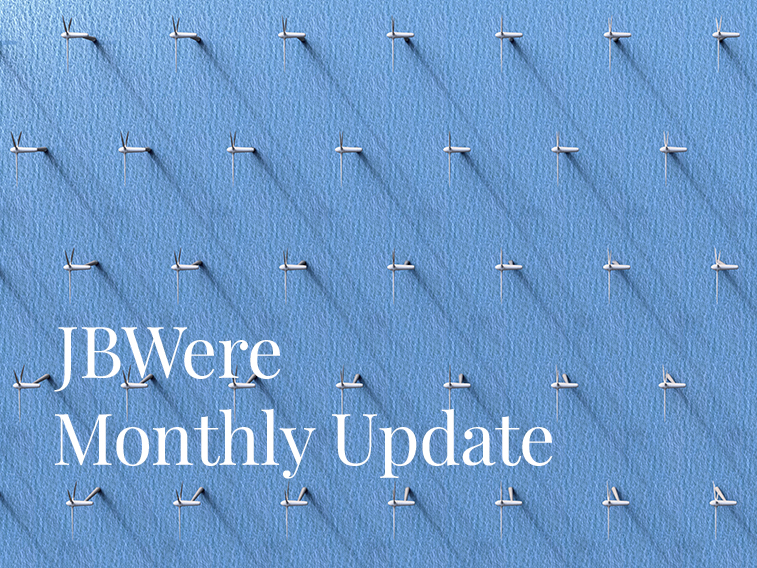Luxury property performance in the spotlight in our annual review as trophy homes continue to set new records


Article
After a wobble early last week, equity markets have resumed their upwards trajectory.

After a wobble early last week, equity markets have resumed their upwards trajectory. Global equities are once again marking record highs and nominal bond yields have also lifted from last week’s lows. Most ascribed the short-lived sell-off in risk markets to growing concerns about the delta variant and its impact on the global growth outlook.
The key question is whether or not the delta variant presents a genuine downside risk for global growth, and if so, threatens the JBWere view that growth assets should continue to out-perform defensive assets over the next 6-12 months. While it is clear that the delta variant is more transmissible than previous variants of COVID-19, it is also true that countries with high vaccination rates are recording far fewer hospitalisations and deaths as the delta variant spreads; for example, the UK and parts of the US.
The delta variant is impacting the growth narrative well after the peak in the “upgrade cycle” for the global economic outlook. Initially, forecasters responded to the spread of the delta variant by shifting the balance of risks around their forecasts to the downside. But more recently, some forecasters have started to mark down GDP forecasts in parts of EM Asia (low vaccination rates), Europe (possibility of the re-introduction of movement restrictions) and the UK. Recent high frequency economic data for July has been weaker than expected in both the US and UK. Some observers are suggesting this reflects the impact of the spread of the delta variant.
For markets, the key will be the extent to which this downgrade cycle persists. We think markets are likely to be reasonably immune to marginal changes to forecasts, especially when most reflect a theme of less growth now but more growth later. Indeed, that appears to be the broad consensus underpinning the rebound in markets – alongside a US results season tracking well so far, the view is that as the vaccination rollout progresses globally, the impact of the delta variant on global growth will slowly reduce over time. Data shows that only 14% of the world’s population has received two doses of the vaccine, so there is still some way to go on this story. Moreover, evidence thus far shows that the economic impact of successive lockdowns lessens over time, largely because households and business adjust to restrictions with less impact to their spending and employment behaviours.
For what it’s worth, we think this is a reasonable forecast. Of course, there are risks – a new variant may emerge that renders vaccines less efficacious. Or governments may respond with tighter movement restrictions that result in a larger hit to growth. And the fact that the emerging markets (EM) complex appears more vulnerable to the delta variant given low vaccination rates may sustain what is already a relatively long period of under-performance relative to the developed markets (DM) economies. This also implies more variability (less synchronisation) in global growth in the quarters ahead.
But for the time being, our sense is that there are good reasons to maintain a positive medium-term growth view on the global economy. In particular:
Generally speaking, this positive outlook for the global economy is consistent with the ongoing out-performance of equities relative to other asset classes such as credit and/or government bonds. For that reason, we continue to recommend investors position their multi-asset portfolios such that they reflect a substantial allocation to growth assets relative to defensive assets. At JBWere, we define defensive assets as cash, government bonds and credit. Growth assets include equities, property and infrastructure.
However, it is also important to note that we now expect lower relative returns from equity markets in coming quarters, compared to those which have been achieved over the last 4 quarters. In part, this should reflect a normalisation of returns, but also, it reflects the fact that the easy gains – for both the economy and markets – are now behind us. So while equities should still deliver a higher return than credit or government bonds, the magnitude of that extra return will be lower than we have seen over the past year or so.
In summary, we think there are a couple of important points to remember. First, while we have passed “peak growth” and are watching the impact of the delta variant carefully, we believe that the medium term growth outlook remains positive, and consistent with multi-asset portfolios that continue to allocate a large proportion of capital towards growth assets. Second, expensive valuations across a number of markets and a mic-cycle economy reinforces the need to ensure a healthy level of diversification within portfolios. Third, while we believe that growth assets will continue to out-perform defensive assets in the quarters ahead, we are also of the view that the degree of this out-performance will moderate. This coincides with the likely peak in earnings growth estimates, as well as the peak in economic growth momentum. Fourth, it remains very important to keep focused on the progression of the economic cycle, and to fully understand the nature or risks being taken in portfolios. Risk management takes on additional importance as the economic cycle matures.
© National Australia Bank Limited. ABN 12 004 044 937 AFSL and Australian Credit Licence 230686.